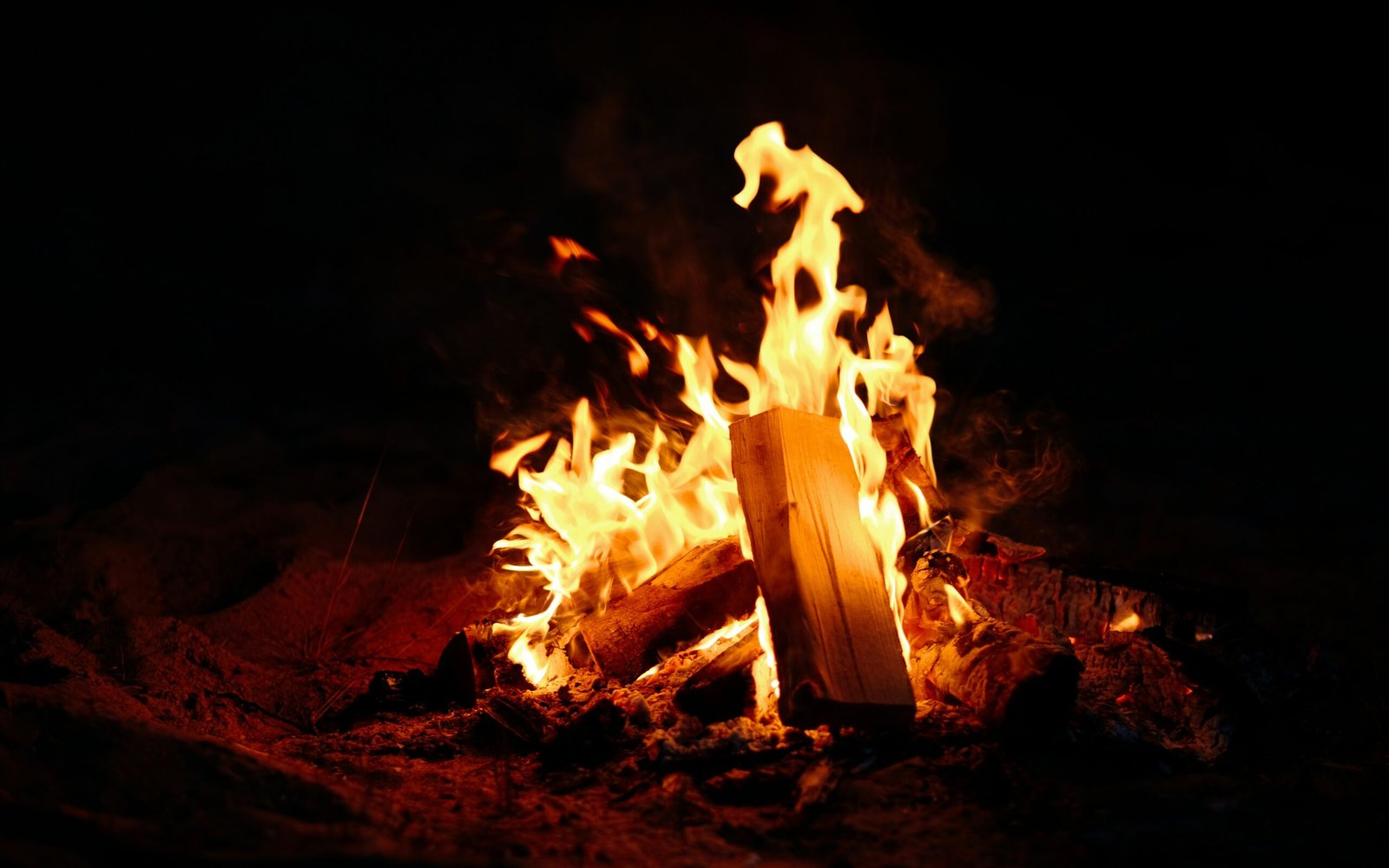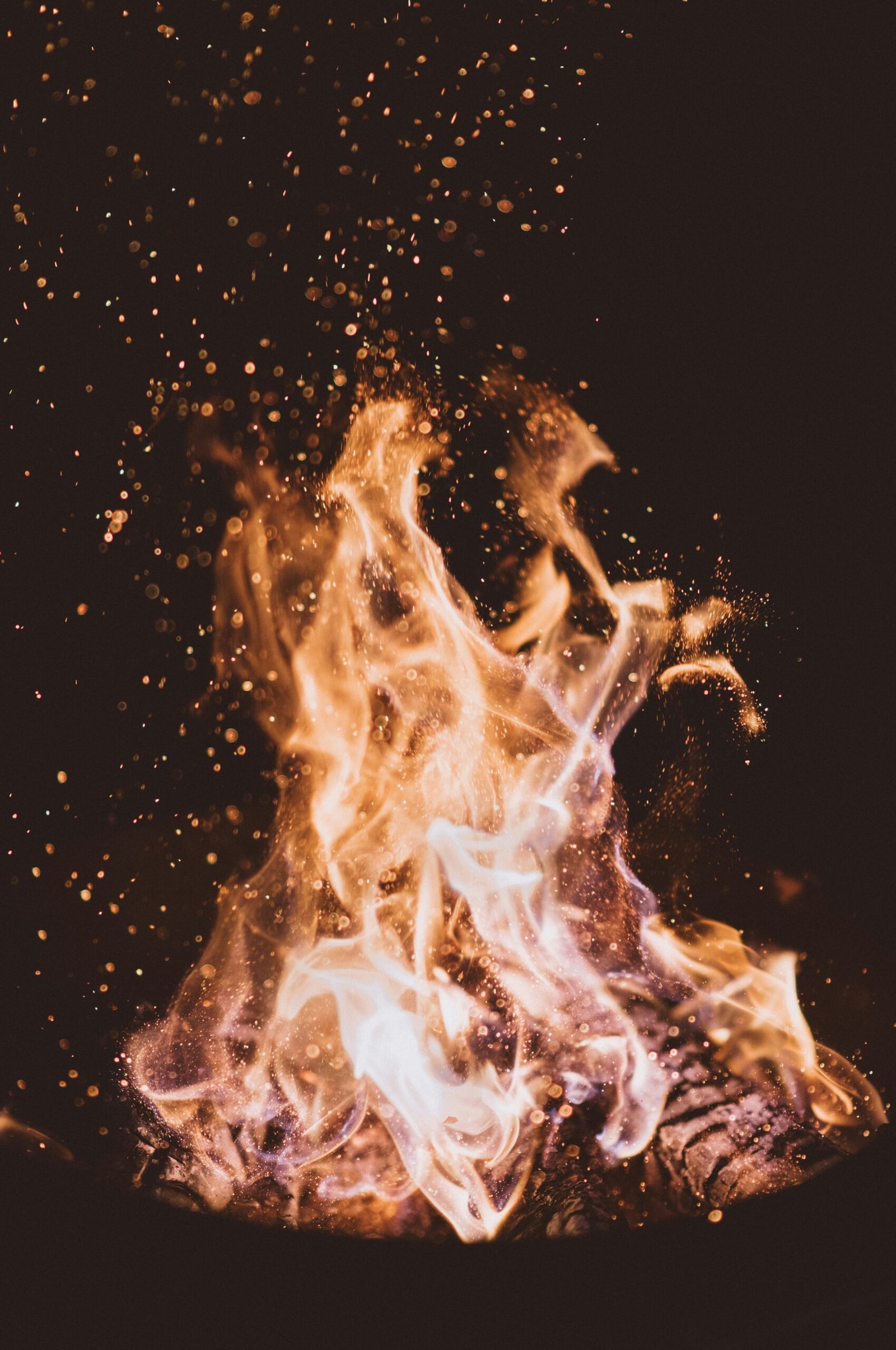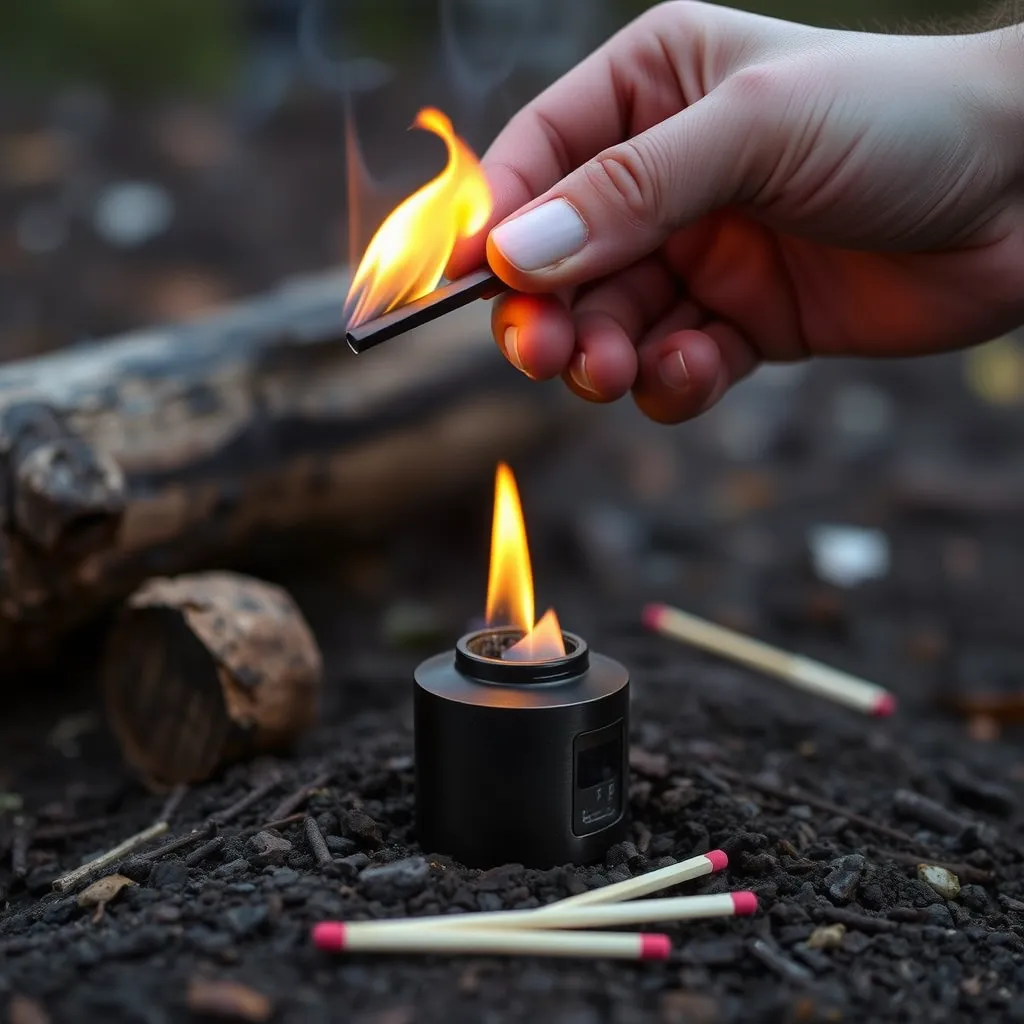
Understanding Fire Basics
Before pursuing the skill of starting a fire in any weather condition, it is crucial to grasp the fundamental principles that govern fire. The concept known as the fire triangle consists of three essential elements: heat, fuel, and oxygen. Each of these components plays a vital role in the combustion process. Without heat, fuel remains inert; without fuel, there is nothing to burn; and without sufficient oxygen, combustion cannot be sustained. This triangle illustrates the interdependence of each element, emphasizing that removing one of these components will extinguish the fire.
The chemical reactions involved in combustion are complex. When fuel burns, it reacts chemically with oxygen, releasing heat and light energy in the process. This reaction produces various gases, primarily carbon dioxide and water vapor. Understanding these reactions can aid significantly in fire management and safety, enabling one to predict how flames will spread or behave under different conditions. Additionally, it is essential to address the importance of proper ventilation, which refers to maintaining an adequate supply of oxygen while minimizing the risk of smoke buildup. Proper airflow ensures that combustion remains efficient and that toxic gases do not accumulate.
Identifying the right fuel sources is equally paramount when preparing to start a fire. Different environments—be it a forest, a campsite, or an urban area—offer various types of fuel. Common fuel sources include dry wood, grass, and leaves, each of which has different burning properties. It is essential to consider the moisture content of the fuel, as wet wood, for example, will require more energy to ignite and sustain a fire. A thorough understanding of these fire basics is the foundation necessary for successfully starting a fire in any weather condition, ensuring both safety and effectiveness.
Essential Fire-Making Tools
When it comes to starting a fire under various weather conditions, having the right tools at your disposal is paramount. A comprehensive fire-making kit should include several traditional tools for optimal efficiency and reliability. The most common tools for igniting a fire are matches and lighters. Waterproof matches can be particularly beneficial, as they maintain their functionality even in damp conditions. Disposable lighters are also effective, but it is advisable to carry a backup in case they run out of fuel or malfunction.
In addition to these conventional tools, fire starters can significantly enhance your fire-building efforts. They come in various forms, ranging from commercial products designed to ignite quickly to homemade solutions such as cotton balls soaked in petroleum jelly. These fire starters are invaluable on windy or rainy days, making it easier to establish a flame from wet kindling.
For those who prefer a more traditional approach, flint and steel provide a proven alternative. This method requires practice but can be incredibly rewarding; the striking of flint against steel generates sparks that can ignite dry tinder. Magnesium fire starters are another practical choice, as they create an ample amount of sparks and are lightweight and compact, making them suitable for outdoor enthusiasts.
Regardless of the tools employed, having an adequate supply of kindling and fuel is essential. Kindling—small, dry sticks or twigs—serves as the initial fuel that helps your fire grow. Larger logs or firewood will be needed to sustain the flame once it is established. It is advisable to gather enough kindling and fuel before attempting to start a fire, especially when engaging in outdoor activities in unpredictable weather. This preparation ensures that you can successfully ignite and maintain a fire whenever conditions permit.
Preparing Your Fire Site
When planning to start a fire, selecting an appropriate site is crucial for safety and functionality. First and foremost, it is essential to choose a location that is at least 10 feet away from any flammable structures or materials, such as trees, bushes, or tents. This distance not only minimizes the risk of accidental fires but also assures that you have sufficient space to gather around the fire.
Another significant consideration is the wind direction. A location sheltered from strong winds is ideal, as it reduces the chances of sparks being carried away from the fire and igniting nearby combustible materials. Additionally, if you are in a wet environment, look for a spot that is elevated and less prone to water accumulation, as wet ground can extinguish a fire quickly.
Once you have identified a suitable location, it is time to prepare the fire site. Begin by clearing the area of debris, including leaves, sticks, and other flammable materials. A clean workspace not only helps to control the fire but also protects against potential hazards. It’s advisable to create a fire ring using stones or bricks. This barrier can help contain the fire, providing additional protection against both wind and rain, making your fire-building endeavors safer.
Furthermore, ensure that there is adequate airflow to the fire. Position the fire ring in a way that maximizes exposure to open air, which enhances combustion efficiency. In wet conditions, even the best wood can struggle to ignite; thus, having a dry base of smaller twigs or tinder will help you establish a strong initial flame. By carefully selecting and preparing your fire site, you will set the stage for a successful and enjoyable experience.
Starting a Fire in Dry Conditions
Starting a fire in dry conditions requires careful planning and execution, as the risk of fire spreading is significantly higher. Therefore, one must be mindful when selecting materials and employing specific strategies to ensure a controlled and successful ignition. The first step is to gather suitable tinder and kindling. In dry environments, natural materials such as dry leaves, pine needles, or small twigs are often effective. These materials have low moisture content, allowing for easier ignition. Additionally, commercially available fire starters can be extremely beneficial, providing consistent and reliable ignition.
Once you have collected the necessary materials, the arrangement of tinder and kindling plays a crucial role in the fire-starting process. Utilizing the teepee or log cabin method can maximize airflow, enhancing fire efficiency. For the teepee method, create a cone-shaped structure with sticks around the tinder, leaving gaps for airflow. This arrangement encourages flames to rise and consume the tinder effectively. In contrast, the log cabin method involves stacking kindling in a square formation around the tinder, allowing for stability and ongoing combustion as the fire grows.
Before attempting to ignite the fire, ensure that the area is clear of any flammable debris that may pose a risk. Surrounding the fire area with rocks can provide a safe boundary. When lighting the fire, it is crucial to use long matches or a lighter to maintain a safe distance from the flame. As the fire begins to grow, gradually introduce larger logs to maintain and sustain the fire. Keep in mind that vigilance is necessary; monitor the fire closely and have water or soil nearby for quick extinguishment in case the fire threatens to spread. Following these guidelines can enable you to start a fire safely in dry conditions while minimizing risks.
Starting a Fire in Wet Conditions
Starting a fire in wet conditions can pose significant challenges, primarily due to the high moisture content in the environment and the difficulty in finding suitable materials. However, with the right techniques and knowledge, it is entirely possible to ignite and maintain a dependable flame even when faced with rain. A critical step is to seek out dry materials that can effectively serve as tinder and kindling.
One of the most effective natural fire starters in wet environments is birch bark. Its inherent oils make it highly flammable, allowing it to catch fire easily, even when damp. Look for thin layers of bark that have fallen from the tree; these can often be found sheltered under trees or stowed away from the influx of moisture. In addition, other dry materials such as dead grasses, small twigs, or resinous pine needles should be sought after, as they can dramatically improve the chances of ignition.
Moreover, it is essential to create a suitable fire bed to keep your fire elevated and protected from the moist ground. Constructing a raised fire bed involves placing larger logs, rocks, or branches to create a platform for your fire. This approach not only aids in airflow but also protects the fire from wind and dampness. Once the platform is established, arrange your dry tinder in a pyramid or teepee formation, ensuring sufficient space for air circulation, crucial for combustion.
When lighting your fire, consider using waterproof matches, lighters, or fire starters specifically designed for adverse weather conditions. This thoughtful preparation can greatly enhance your likelihood of successfully starting a fire despite the persistent challenges presented by wet conditions. By utilizing dry materials and a raised fire bed, you can master the art of fire-making, ensuring warmth and safety in even the most inclement weather.
Starting a Fire in Windy Conditions
When attempting to start a fire in windy conditions, it is essential to carefully consider both the arrangement of materials and protective measures to ensure a successful execution. Strong winds can not only extinguish flames but can also cause sparks and embers to travel unpredictably, posing a serious danger if proper precautions are not taken.
Begin by scouting the area for a natural shield against the wind. This can be as simple as using a rock outcropping, a dense thicket, or even digging a small trench to help break the wind’s force. With any natural cover, always ensure it is safe and compliant with fire regulations in your region. Position your fire site with the wind at your back, allowing the fire to draw air from the windward side, enhancing its ability to ignite and maintain its flame.
Regarding fuel arrangement, employ a technique called the “teepee” structure. This involves leaning kindling against each other in a tent-like formation, creating a funnel that captures and concentrates air that feeds the flame. As wind can easily scatter lighter materials, use heavier sticks and logs to create a solid base that will remain stable even in gusty conditions. Install a solid layer of larger logs or rocks around the base of your fire, serving as an anchor to reduce potential disturbances caused by gusts.
When it comes to ignition, consider using fire starters or accelerants that are wind-tolerant to facilitate quicker combustion. Light your kindling from the upwind side, allowing the flames to rise towards the wind, which promotes better burning conditions. Always have a clear plan for safety by keeping very little flammable material within reach of the flames, thereby minimizing risks associated with blown embers. By prioritizing these methods, you can effectively start a fire even when confronted with windy challenges.
Using Firestarters and Techniques
Starting a fire, particularly in adverse weather conditions, requires strategic use of firestarters and various techniques designed to enhance ignition efficiency. Firestarters can range from commercially produced products to homemade solutions that utilize easily accessible materials. Understanding how to effectively employ these tools can be a crucial skill for outdoor enthusiasts.
Commercial fire starters, such as magnesium sticks or chemical fire lighter cubes, are specifically designed to ignite quickly and burn at higher temperatures. These products are often a reliable choice in rainy or windy conditions. Using a magnesium fire starter typically involves scraping off a small amount of magnesium shavings onto your tinder, striking a spark with a ferro rod, and allowing the ignition to catch. This method is particularly effective in wet environments where traditional tinder may struggle to ignite.
On the other hand, homemade fire starters provide a budget-friendly alternative. One popular option involves cotton balls and petroleum jelly. The petroleum jelly acts as a fuel source, allowing the cotton ball to burn longer once ignited. To utilize this homemade fire starter, simply coat cotton balls with petroleum jelly and store them in a waterproof container. When you’re ready to start a fire, fluff the cotton ball to increase surface area, light it with a match or lighter, and place it among your dry tinder. This method is especially useful in cold and damp conditions where traditional tinder may be compromised.
In addition to utilizing fire starters, it’s beneficial to choose dry and effective tinder. Shredded bark, dry leaves, or even crushed pine needles can serve as excellent tender options. Arranging your kindling and firewood in a teepee or log cabin layout can also facilitate airflow and encourage combustion. Mastering these techniques can ensure you have the ability to start a fire efficiently, regardless of the weather conditions.
Building and Maintaining Your Fire
Once the fire has been successfully ignited, the next critical step is to ensure its longevity through proper maintenance. A steady fire requires a balance of fuel and air to burn efficiently. It is essential to understand how to manage these elements to keep your fire alive, especially under varying weather conditions.
The first aspect of maintaining your fire involves adding fuel. It is advisable to regularly assess the amount of wood or other materials present. When the flames begin to dwindle or the heat decreases noticeably, it is an indication that more fuel is needed. The type of fuel you add can impact the fire’s behavior; for instance, seasoned hardwood provides longer-lasting heat compared to softer woods. Approach the fire safely, making sure not to smother it while adding fuel. Gradually increase the fire’s intensity by placing smaller pieces of wood first; this will help reignite the flames effectively.
Another crucial factor is the control of airflow. Air is a vital component for combustion, and adjusting its flow can significantly influence the fire’s strength. If you notice the flames struggling to rise, try gently blowing at the base of the fire or repositioning logs to create space for air to circulate. Conversely, if the fire is roaring too vigorously, reduce the airflow by strategically piling more wood over the fire or using a fire guard, which can help in controlling the flames while still allowing for adequate oxygen supply.
Recognizing when the fire requires more fuel, as opposed to when it should be left to burn down, enhances both safety and resourcefulness. For instance, in a controlled environment where resources are limited, it is wise to allow some fires to burn down naturally to conserve wood while still providing warmth and light. Continuous monitoring and an understanding of your fire’s needs will lead to a more effective and enjoyable experience, ensuring safety in both recreational and survival situations.
Safety Precautions and Fire Extinguishing Tips
Starting a fire, whether for warmth, cooking, or ambiance, necessitates a strong commitment to safety measures. Before initiating a fire, it is vital to assess the surrounding environment and familiarize oneself with the local regulations regarding fire usage. Many regions have specific rules, particularly in dry seasons, to prevent wildfires. Always check if permits are required and adhere to any fire bans or restrictions in place.
In addition to understanding regulations, one must evaluate the conditions of the site. Choose a location that is clear of overhanging branches, dry leaves, and other flammable materials. Establish a fire ring using stones or choose a designated fire pit to help contain the flames. Having a manageable fire size is essential; a small, controlled fire is easier to monitor and extinguish than a large blaze.
While enjoying the warmth of the fire, always have a method for extinguishing it readily available. Water should be the primary extinguishing agent; however, dirt or sand can also be effective in smothering flames. Keep a bucket of water or a fire extinguisher nearby at all times. Should the fire begin to spread, act quickly and confidently to prevent it from getting out of control.
Once the fire has served its purpose, proper extinguishing techniques must be employed. Pour water over the remaining embers until hissing sounds cease, ensuring that all ashes are thoroughly dampened. Stir the ashes with a stick to verify complete extinguishment and check for any remaining hotspots. It is crucial never to leave a fire unattended, and always ensure it is completely out before leaving the site.
Through adherence to these safety precautions and effective fire extinguishing practices, individuals can responsibly enjoy the benefits of fire while minimizing risks to themselves and the environment.


